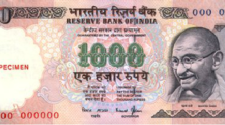Following any sport is akin to being a wine aficionado. You are always chasing a sensation, the sensation when a good wine had tickled your senses. You are chasing that high, that explosion of flavors. A true connoisseur of wine knows the price tag or the age of the seal are immaterial. Sometimes an off the shelf, garden variety bottle can hold a magical taste that an expensive bottle may never own. Each wine craft is influenced heavily by the region, the people it is sourced from. The fruit is the same; however, the accidents of chance lead to unpredictable phenolics.
Same thing in sports. The top billing, the headline act more often than not disappoints you. For example, you expect a thrill when the best offensive team in football, Brazil, meets the best defense of Italy in a World Cup Final. A Mouth-watering prospect. But like a red-colored gravy that fails to be spicy, the match turns out to be a dud dull goalless draw. Ultimately decided on the lottery of the penalty shoot-out. In the same vein, a game between minnows Iceland and giants Germany delivers an unlikely thriller — a three-two victory in the dying minutes of extra time.
Cricket is no exception, a game of flukes and surprises, with dead-on-arrival World Cup Finals. But, by chance comes a final in which a hopeful man runs a marathon to catch the looping ball. One catch changes the course of the match and the course of History.
One aspect that differentiates Cricket from other sports is the long matter called Test Match Cricket. A format designed to eliminate flukes and lucky breaks by indulging in a five-day game.
To make matters more egalitarian, eliminating any flukes that might creep teams play out a ‘series of five-day test matches. Just like an entire year-long premier league season is a better gauge of the true strengths of a team, a test match series is an accurate barometer. The team has to be truly dominant in personnel, pitches, and match conditions to win a series.
Getting back to our phenolic analogy, Test match cricket is like Champagne. To be sourced from particular varieties of fruit, from a specific location, following a precise methodology and storage standards. Trying to guarantee elegance. However, does this stop the odd bottle from surprising you? Can elegance be guaranteed? You may control the materials, the conditions, but who can hold the chisel of time!
Same thing in test cricket. You can predict an affair at the outset, whether it will end in matrimony or in separation. Can England beat India on a track that turns on day one — No chance. Can India win on pitch greener than the grass around it — The cold New Zealand morning carries the mist of defeat with it. In such a dire calculable world, we are surprised by a Romeo and Juliet story every once in a while. The India-Australia series of 2020-21 was one such rare occasion.
You may say it is a long-winded introduction. From the alleys of fermented intoxicants to the passionate matters of the heart, it is indeed a long-winded introduction. That too for a sport, and for a format that most of the world finds beyond puzzling. But, the context is necessary to establish the ‘specialness’ for those ignorant of test cricket.
Like every good drama, this contest has its antecedents. In 2018-19, India became the first Asian country to defeat Australia in Australia. This monumental feat was dismissed by the likes of Australian captain Tim Paine. He attributed the loss to the absence of two key players — Steve Smith and David Warner. He went on to say that even India will struggle to win tests in the absence of Kohli and Pujara. Australian press played on this theme to discount India’s win. Australian bowlers were injured and out of form, and its best batsmen were not on the pitch; hence, the Indian achievement is not that great.
As if the absence of the two players was India’s fault. Both Warner and Smith were banned for ‘cheating.’ Rookie Bancroft was caught with sandpaper down his pants, grinding the ball’s surface. Curiously, only three Australian team members knew about Bancroft, Captain Smith, and leadership mentor Warner. When Mohammad Amir was caught spot-fixing, the entire Pakistan team was branded as match-fixers. But, here we are to believe that rest of the Australian squad, its support staff, coaches all were in the dark about it.
 As it came to be known, ‘ Sandpaper Gate’ forced a significant rethink across all sectors of the cricketing establishment in Australia. And, when we talk about the cricketing establishment, we are not talking just about the players and administrators at Cricket Australia. It includes the Australian press, the hostile crowd, the commentators, ex-players, the whole lot. Touring Australia was like raiding the opponent’s territory in Kabbadi. Everyone was out to get you. Demeaning questions from the press, outright insults from the spectators, plus the so-called on-field sledging, the game was played at two levels. One on the pitch with the ball and the other with the psyche of the opponents. Demoralize the opponents before they take guard was the Australian motto.
As it came to be known, ‘ Sandpaper Gate’ forced a significant rethink across all sectors of the cricketing establishment in Australia. And, when we talk about the cricketing establishment, we are not talking just about the players and administrators at Cricket Australia. It includes the Australian press, the hostile crowd, the commentators, ex-players, the whole lot. Touring Australia was like raiding the opponent’s territory in Kabbadi. Everyone was out to get you. Demeaning questions from the press, outright insults from the spectators, plus the so-called on-field sledging, the game was played at two levels. One on the pitch with the ball and the other with the psyche of the opponents. Demoralize the opponents before they take guard was the Australian motto.
In such a hostile environment, you hold some expectations of fairness with the referees of the games. However, even they were hand in glove with the pressure tactics of Cricket Australia. Can any Indian fan forget the ridiculous ‘head before wicket’ dismissal of Sachin Tendulkar? And the even more absurd Ross Emerson ‘no-balling’ a Muralitharan leg-break delivery? When eggs were thrown at the Sri Lankan team out on a night walk, you know what Murali’s reaction was —”When you come to Australia, you expect such things.” Such was the hostile culture towards touring teams. This culture had made Australia, otherwise the most respected group in cricketing ability, the most disliked team in world cricket. Winning at all ‘costs’ strategy was brought under scrutiny by Sandpaper Gate. Because you may find the aggression and the on-field antics entertaining, but you won’t like your kids emulating it.
Cricket Australia embarked on public relations drive towards ‘likability.’ Abusive spectators were thrown out of stadiums to accommodate the changing world culture. Touring teams were given a warm welcome, photo-ops, publicity drives. Stump mic conversations moved into the zone of friendly banter on topics like babysitting and temporary Captains. Tim Paine was designated to become the soft face of Australian Cricket. And when the Captain of the rebooted Australian side was discounting India’s series win, you sensed the resentment that was brewing down under…















No Comment